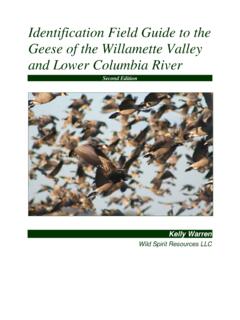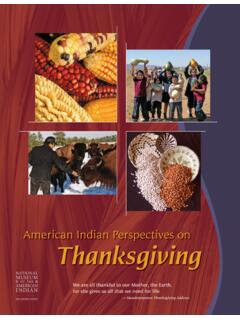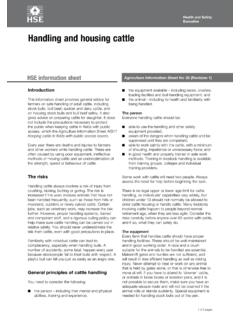Transcription of Carbon Sequestration Credits A Landowner’s Guide to …
1 In association with the Commonwealth ProjectA Landowner s Guide to Carbon Sequestration CreditsCommunity-University Partnership Supported By: A Landowner s Guide to Carbon Sequestration CreditsIn association with the Commonwealth ProjectA Landowner s Guide to Carbon Sequestration CreditsA Landowner s Guide to Carbon Sequestration CreditsA Landowner s Guide to Carbon Sequestration CreditsA Landowner s Guide to Carbon Sequestration CreditsA Landowner s Guide to Carbon Sequestration CreditsA Landowner s Guide to Carbon Sequestration CreditsA Landowner s Guide to Carbon Sequestration CreditsA Landowner s Guide to Carbon Sequestration Credits !
2 ,ANDOWNERpS 'UIDE TO #ARBON 3 EQUESTRATION #REDITSA Landowner s Guide to Carbon Sequestration CreditsIn association with the Commonwealth ProjectA Landowner s Guide to Carbon Sequestration CreditsCommunity-University Partnership Supported By: In association with the Commonwealth ProjectA Landowner s Guide to Carbon Sequestration CreditsINTRODUCTIONCONTACT INFORMATION:CLIMATE CHANGECARBON SEQUESTRATIONWHAT Carbon Credits AREHOW Carbon Credits ARE EARNEDHOW PAYMENTS FOR Credits WORKCARBON CREDIT PRICESOTHER NOTESTHE CHICAGO CLIMATE EXCHANGE (CCX) FUTURE OF THE EXCHANGE Sequestration METHODS CURRENTLY ACCEPTED BY THE CCX:CONSERVATION FARMINGGRASS PLANTINGSANAEROBIC METHANE DIGESTERSTREE PLANTINGS LONG TERM COMMITMENTVERIFICATION AND AGGREGATIONVERIFICATIONAGGREGATIONPOTENT IAL AGGREGATORS FOR MINNESOTA LANDOWNERSThe Delta Institute (DI)Aggregate Credit Corporation (AGC)The National farmers Union (NFU) Forecon EcoMarket Solutions.
3 (Forecon)LANDOWNER OBLIGATIONSSTACKABLE INCENTIVES EXAMPLE STEPS TO ENROLLMENTPOTENTIAL INCOME CALCULATIONS OVER THE LIFE OF THE CONTRACTEXAMPLE CONTRACT:CCX Carbon ACCUMULATION TABLESSOIL OFFSET MAPS334555566677788899991010101010111214 15161819 Table of ContentsPage 2 Page 3 IntroductionThis Guide offers a path for local landowners to earn additional income while helping diminish adverse effects of global climate change through implementation of Carbon Sequestration and other stackable incentives. This document is a tool to help landowners make the decision whether or not to enroll their land in Carbon Sequestration .
4 It discusses background information on Carbon Sequestration and global climate change; current methods of Sequestration , including forestry, conservation planting, methane capture and others; and steps a land owner must take, including contracts, verification, and implementation, once they have made the decision to enroll their lands in a Sequestration Information:Dean Current, Research Associate Center for Integrated Natural Resources and Agricultural Management UMN Dept of Forest Resources 115 Green Hall, 1530 N. Cleveland St. Paul, MN 55108 (612) 624-4299 Kent Scheer, Project Coordinator The Commonwealth ProjectWadena, MN(218) Harting, Undergraduate Research Assistant University of Minnesota, College of Food, Agriculture and Natural Resources Science1716 Rollins Ave SEMinneapolis, MN 55414(608) Zamora, Assistant Extension Professor University of Minnesota Extension Service708 Maple St.
5 Brainerd, MN Ulland, Executive Director Central Region Sustainable Development Partnership1830 Airport RoadStaples, MN 4 Climate ChangeBackground Information In every corner of the globe on land and in water, in melting ice and disappearing snow, during heat waves and droughts, in the eyes of hurricanes and in the tears of refugees the world is witnessing mounting and undeniable evidence that nature s cycles are profoundly changing. -- Al Gore, An Inconvenient TruthScientists around the world began raising the idea of global climate change more than 40 years ago, when man-made changes to the atmosphere first began to be are multiple factors causing climate change, many of which are human-induced, including deforestation, urbanization, emissions from burning fossil fuels, and industrial agriculture.
6 Changes in climate have seen exponential growth as both natural and man-made factors build upon one another. As emissions in the atmosphere restrict more of the sun s solar rays from reflecting off the earth and back into space, the temperature rises and the ice and snow on the poles begin to melt. Historically this ice and snow have reflected light off the earth, but as it melts and the underlying ground is exposed, higher levels of solar rays are absorbed, further increasing temperatures and continuing to accelerate the speed at which climate change discussion focuses on global climate change, not global warming.
7 Global warming implies the earth temperatures will increase, that the entire earth with heat up. Global climate change, the subject of this discussion, results in severe changes in temperature, precipitation, and the number of severe storms. These changes in weather patterns may result in changes in vegetation, wildlife habitat and habitat ranges and even economic opportunities. In Minnesota and the northern United States, for example, these changes may manifest themselves through the encroachment of savannah landscapes, the loss of deciduous forests, and less overall accumulation of precipitation along with higher degrees of intensity when precipitation does occur.
8 This could change winter based recreation by reducing opportunities for snowmobiling or skiing. Less precipitation can affect farmers and the type, quality and quantity of crops early 2007, the Intergovernmental Panel on Climate Change, a scientific effort spearheaded by the United Nations (UN) and supported by scientists from countries around the world, found there is a 90 percent probability that human actions are contributing to global climate change, statistically a very high probability. Additionally, the lead scientist for and the president of the American Association for the Advancement of Science, John Holdren, noted that evidence of climate change and its effects are absolutely stunning.
9 Page 5 Carbon SequestrationCarbon Sequestration is the capture and secure storage of Carbon dioxide that would otherwise be emitted to or remain in the atmosphere. Terrestrial Carbon Sequestration is Carbon stored in the biomass created by perennial vegetations such as root systems and tree of free floating atmospheric Carbon to a fixed-state Carbon in can be achieved through the following methods:Tree plantings (primary focus of this document) Soil Organic Matter (decayed plant remains which hold Carbon within) Perennial grass planting Underground traps, including large bodies of water What Carbon Credits areCredits that you as a rural landowner can receive in exchange for implementing perennial vegetations on your land which result in high levels of Carbon Sequestration .
10 These Credits are then sold on the CCX for cash Carbon Credits are EarnedCarbon Credits encompass two ideas:The prevention and or reduction of Carbon emissions produced by human related activities 1. from reaching the atmosphere by capturing and diverting them to secure storage. Methane digesters or conservation farming, which are discussed on following pages, are examples of this and work to reduce to amount of Carbon released into the atmosphere in the first removal of Carbon from the atmosphere by various means such as agroforestry or 2. perennial grasses and securely storing it in forms such as biomass or soil organic , as a landowner, you will earn Carbon Credits for implementing CCX approved Sequestration methods (see following page for list of approved methods).








